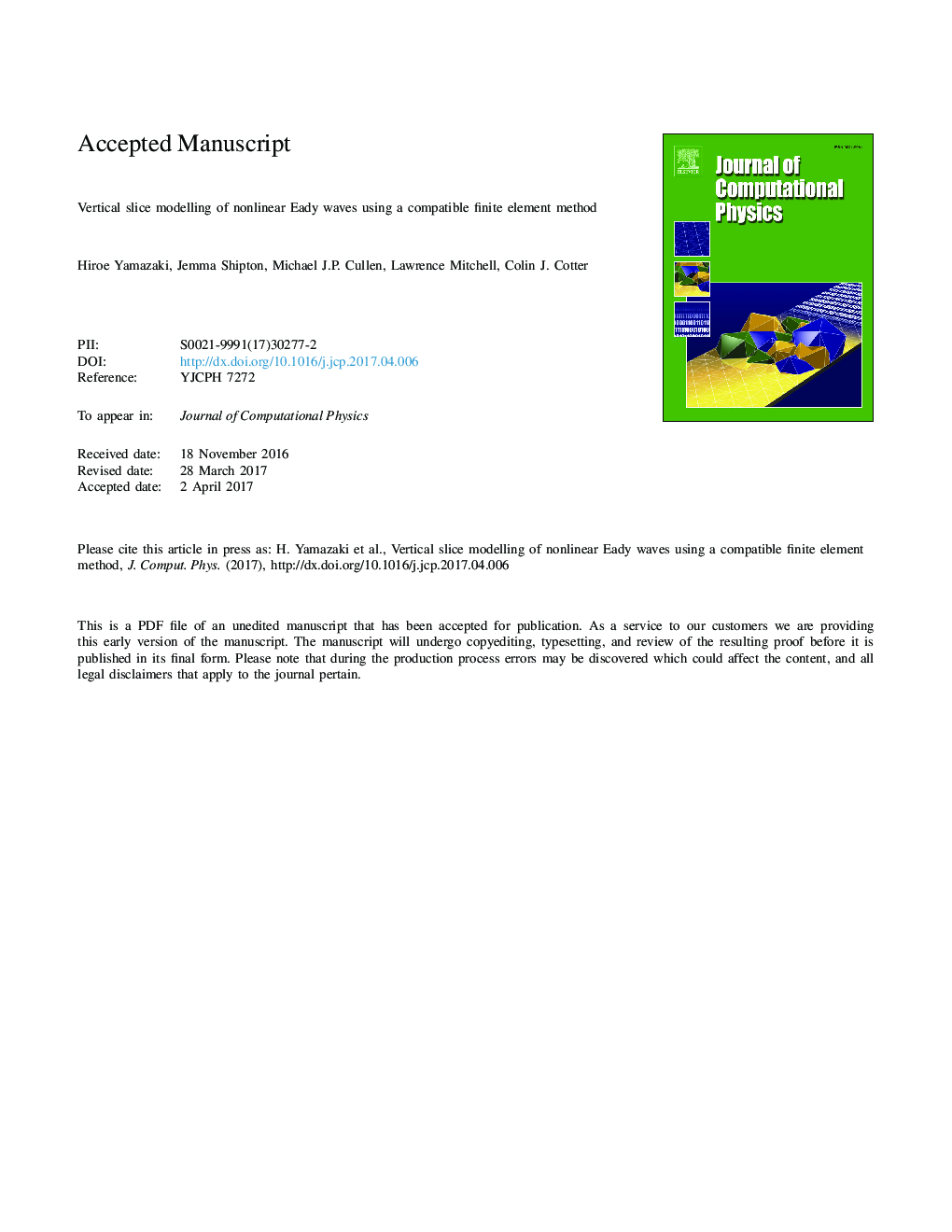| Article ID | Journal | Published Year | Pages | File Type |
|---|---|---|---|---|
| 4967344 | Journal of Computational Physics | 2017 | 28 Pages |
Abstract
A vertical slice model is developed for the Euler-Boussinesq equations with a constant temperature gradient in the direction normal to the slice (the Eady-Boussinesq model). The model is a solution of the full three-dimensional equations with no variation normal to the slice, which is an idealised problem used to study the formation and subsequent evolution of weather fronts. A compatible finite element method is used to discretise the governing equations. To extend the Charney-Phillips grid staggering in the compatible finite element framework, we use the same node locations for buoyancy as the vertical part of velocity and apply a transport scheme for a partially continuous finite element space. For the time discretisation, we solve the semi-implicit equations together with an explicit strong-stability-preserving Runge-Kutta scheme to all of the advection terms. The model reproduces several quasi-periodic lifecycles of fronts despite the presence of strong discontinuities. An asymptotic limit analysis based on the semi-geostrophic theory shows that the model solutions are converging to a solution in cross-front geostrophic balance. The results are consistent with the previous results using finite difference methods, indicating that the compatible finite element method is performing as well as finite difference methods for this test problem. We observe dissipation of kinetic energy of the cross-front velocity in the model due to the lack of resolution at the fronts, even though the energy loss is not likely to account for the large gap on the strength of the fronts between the model result and the semi-geostrophic limit solution.
Related Topics
Physical Sciences and Engineering
Computer Science
Computer Science Applications
Authors
Hiroe Yamazaki, Jemma Shipton, Michael J.P. Cullen, Lawrence Mitchell, Colin J. Cotter,
